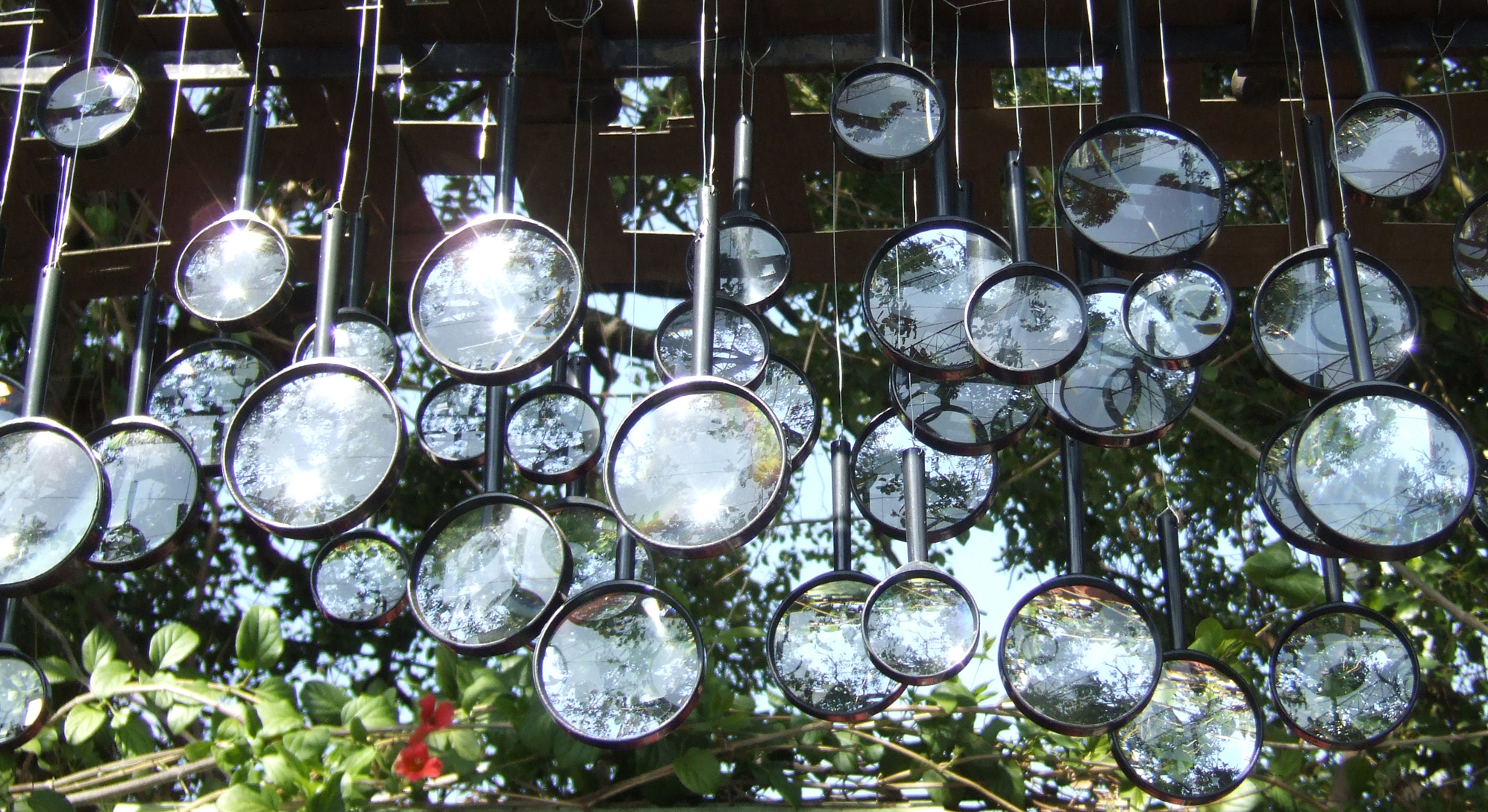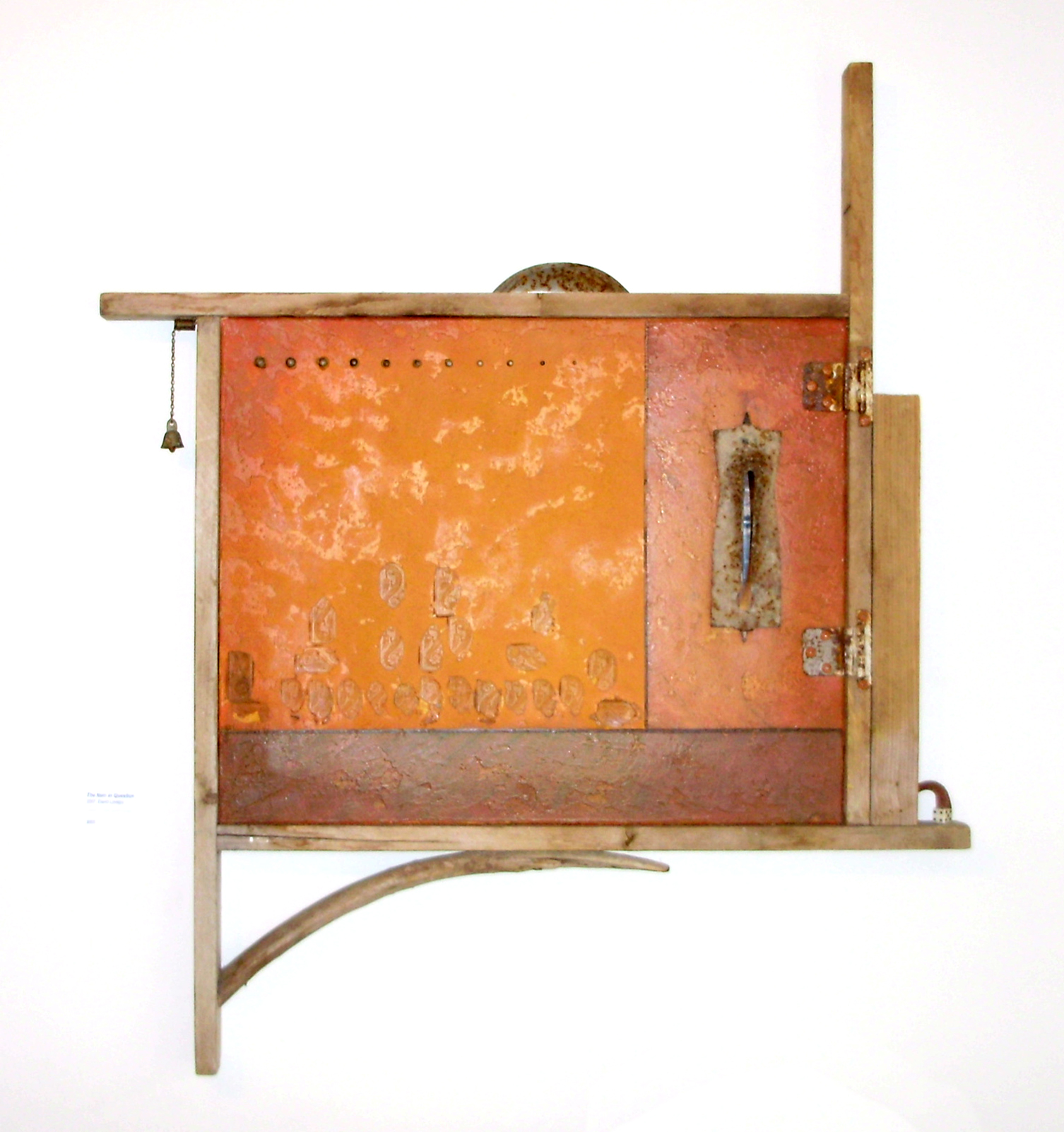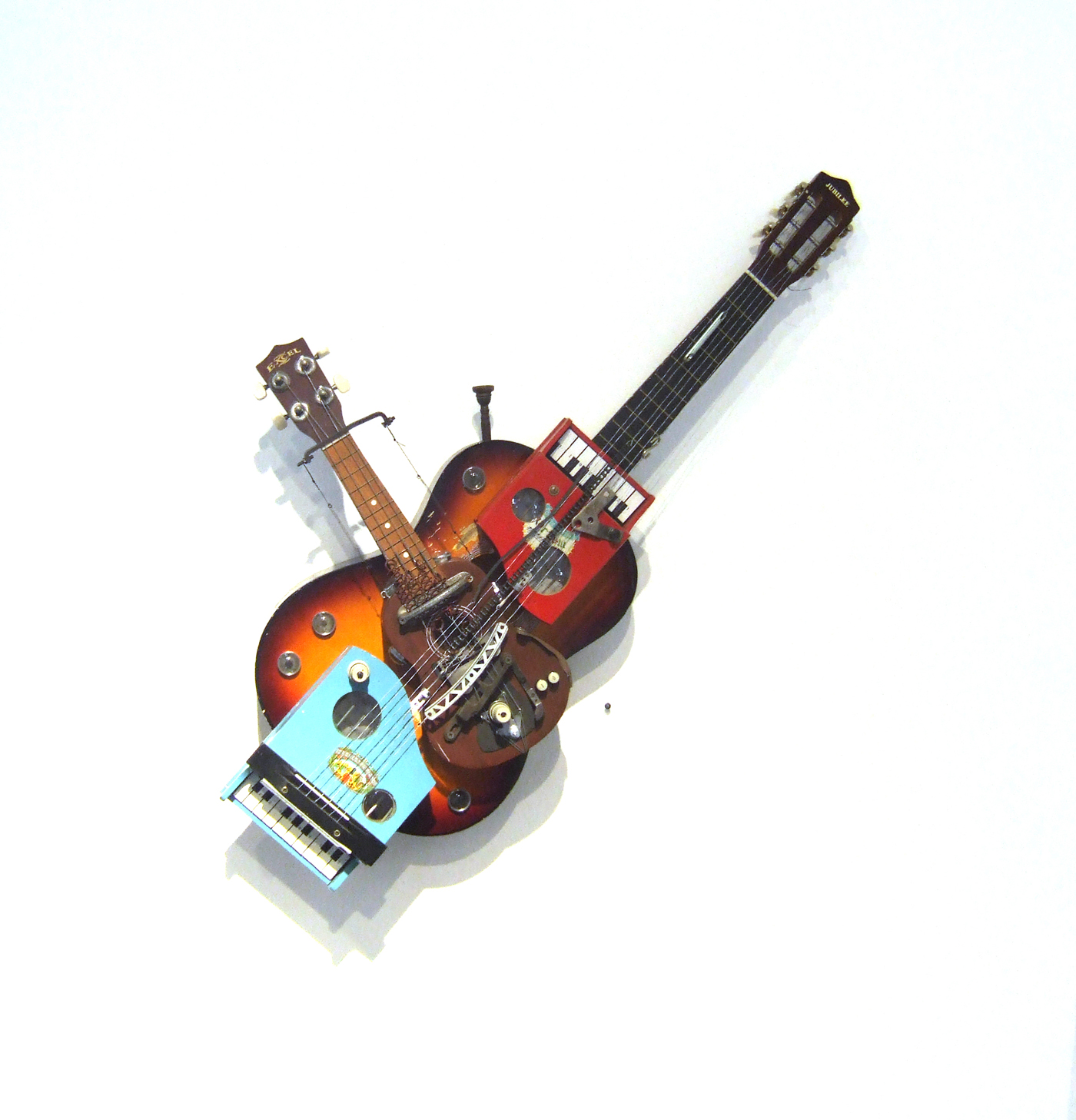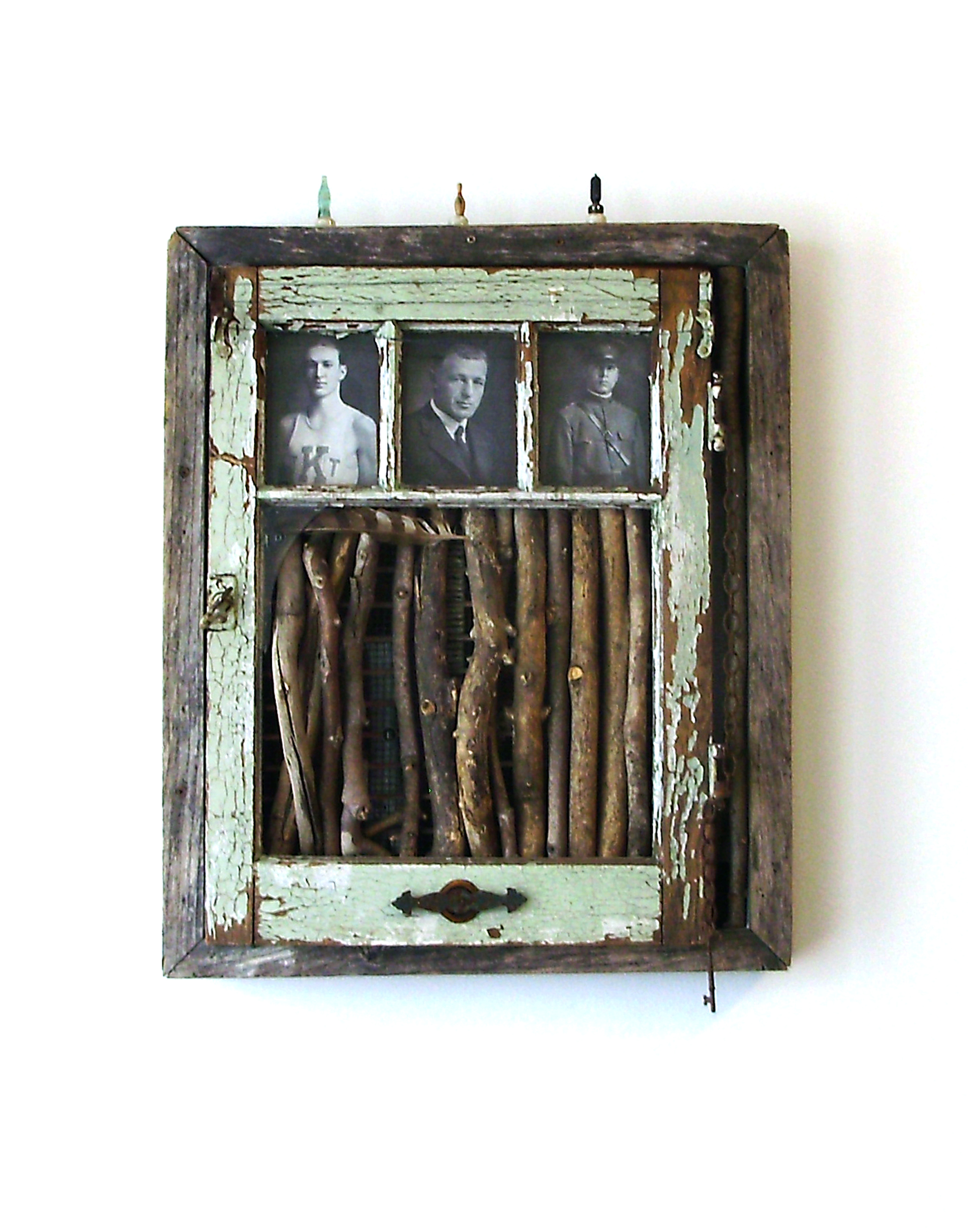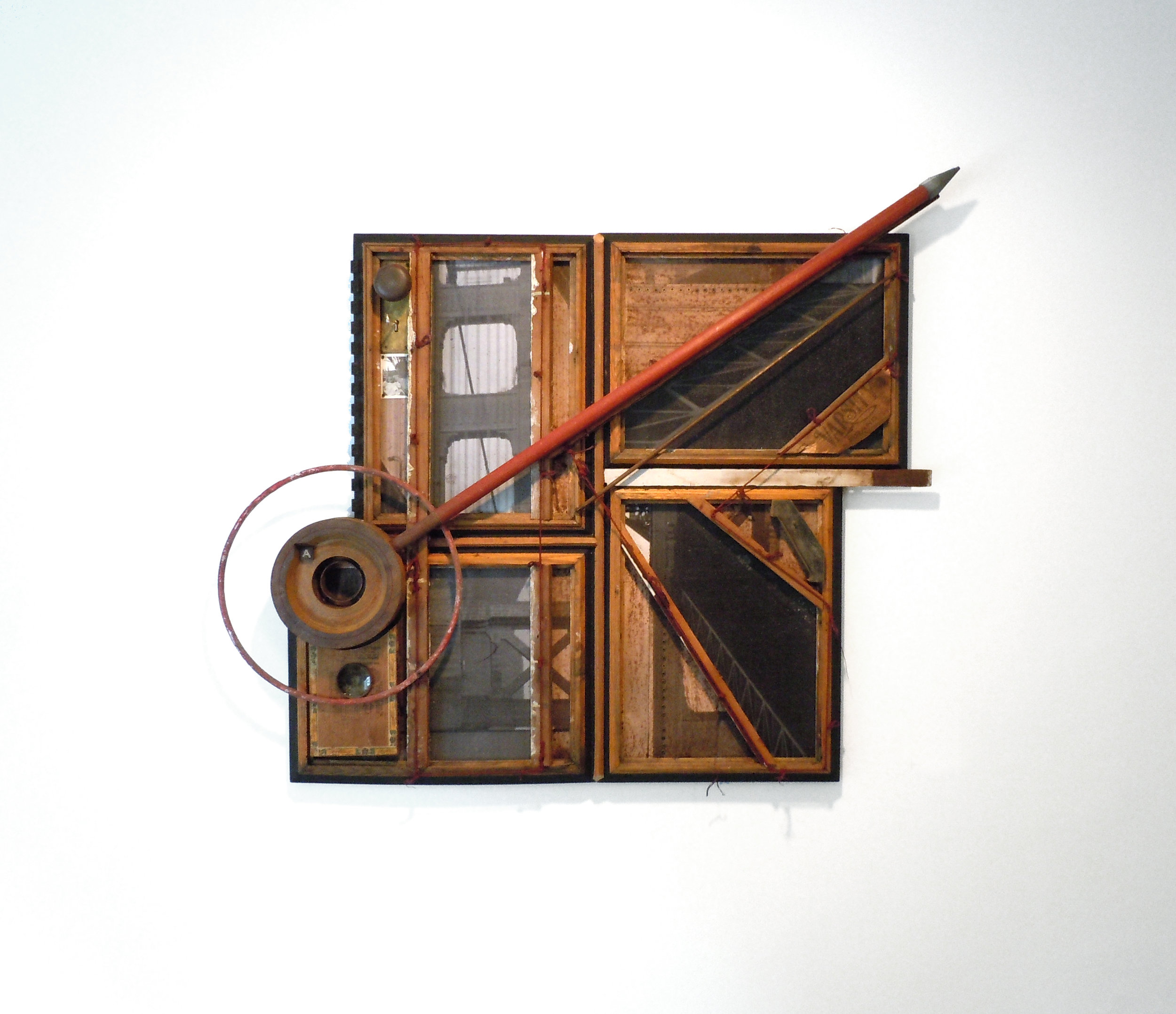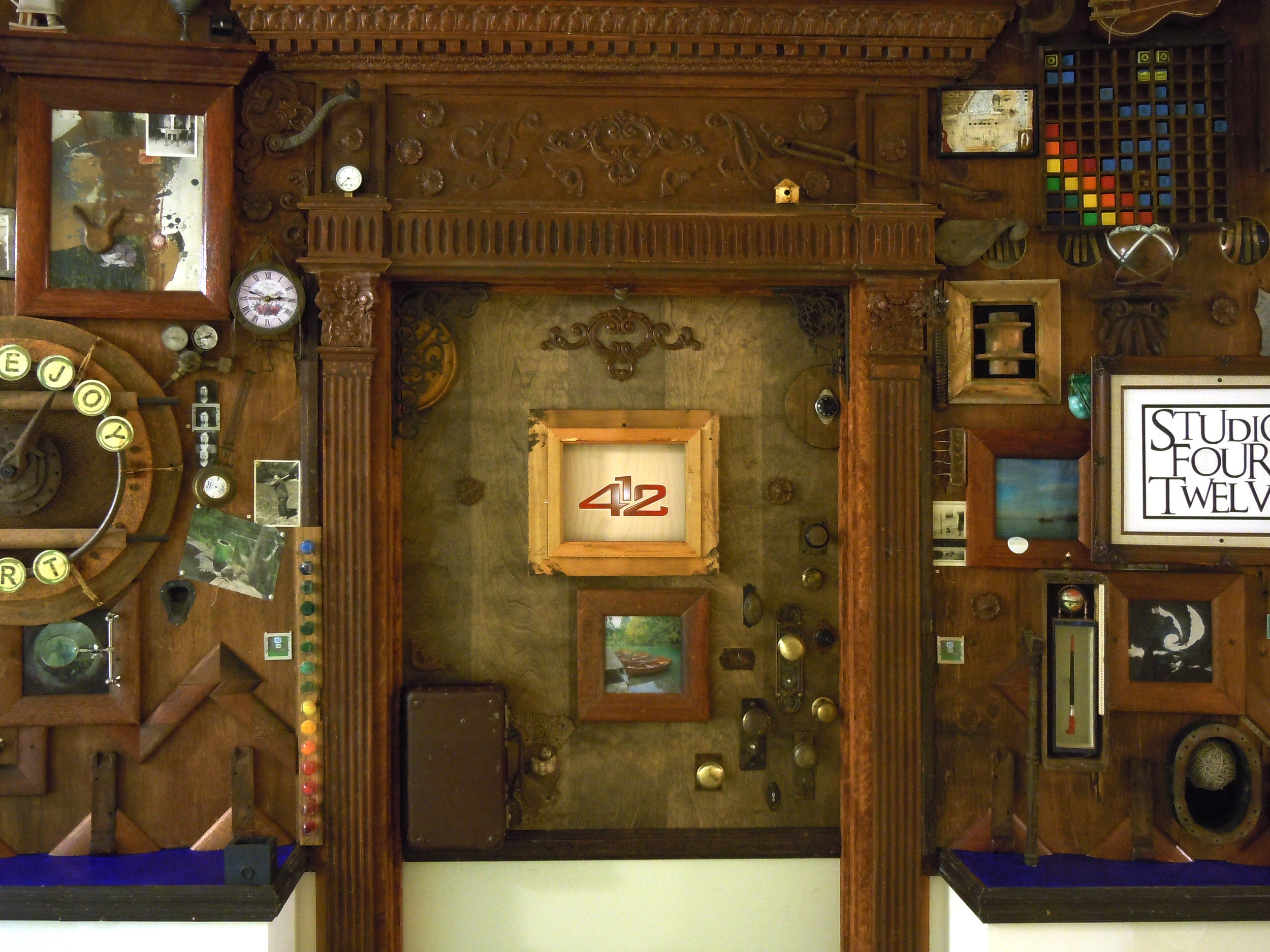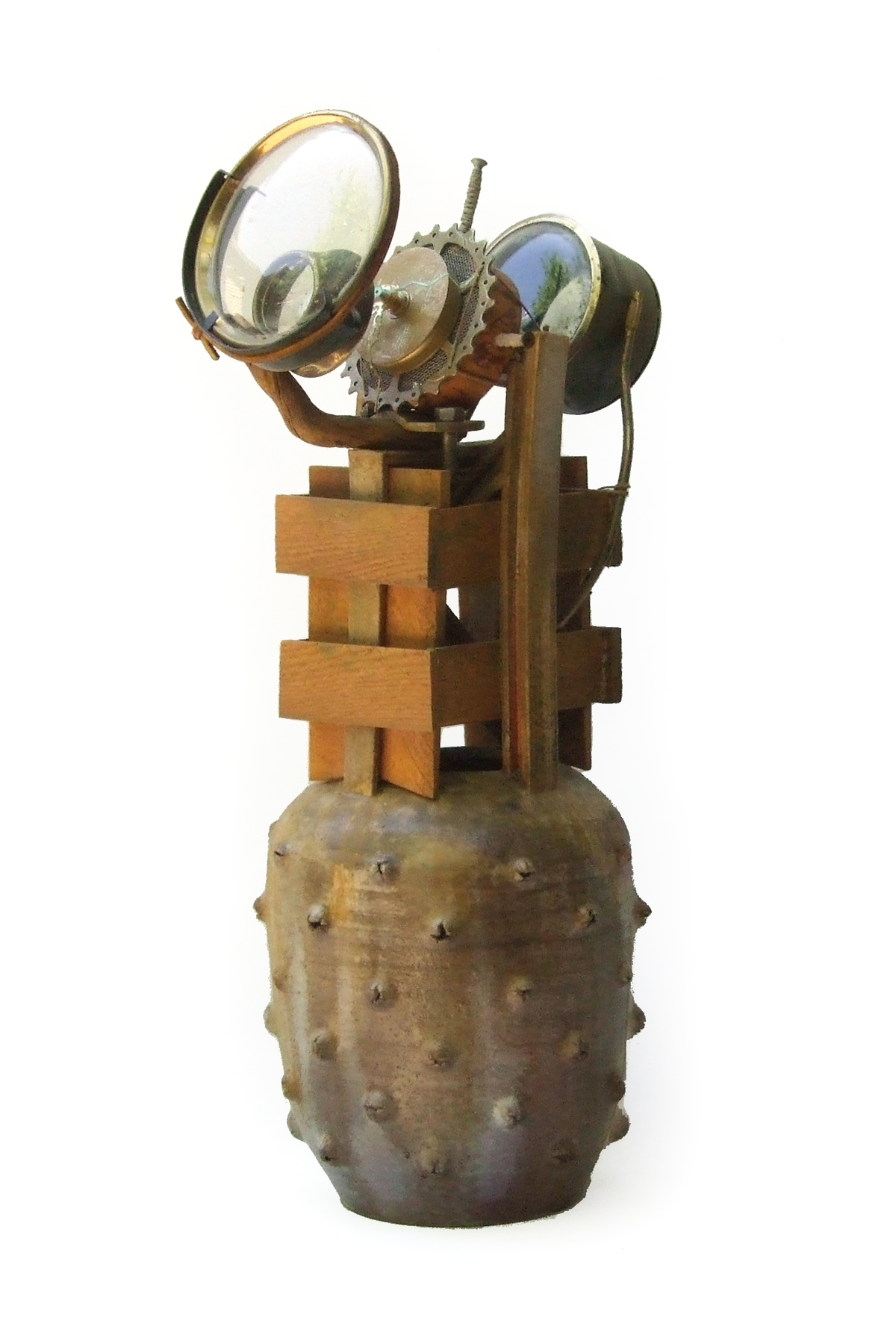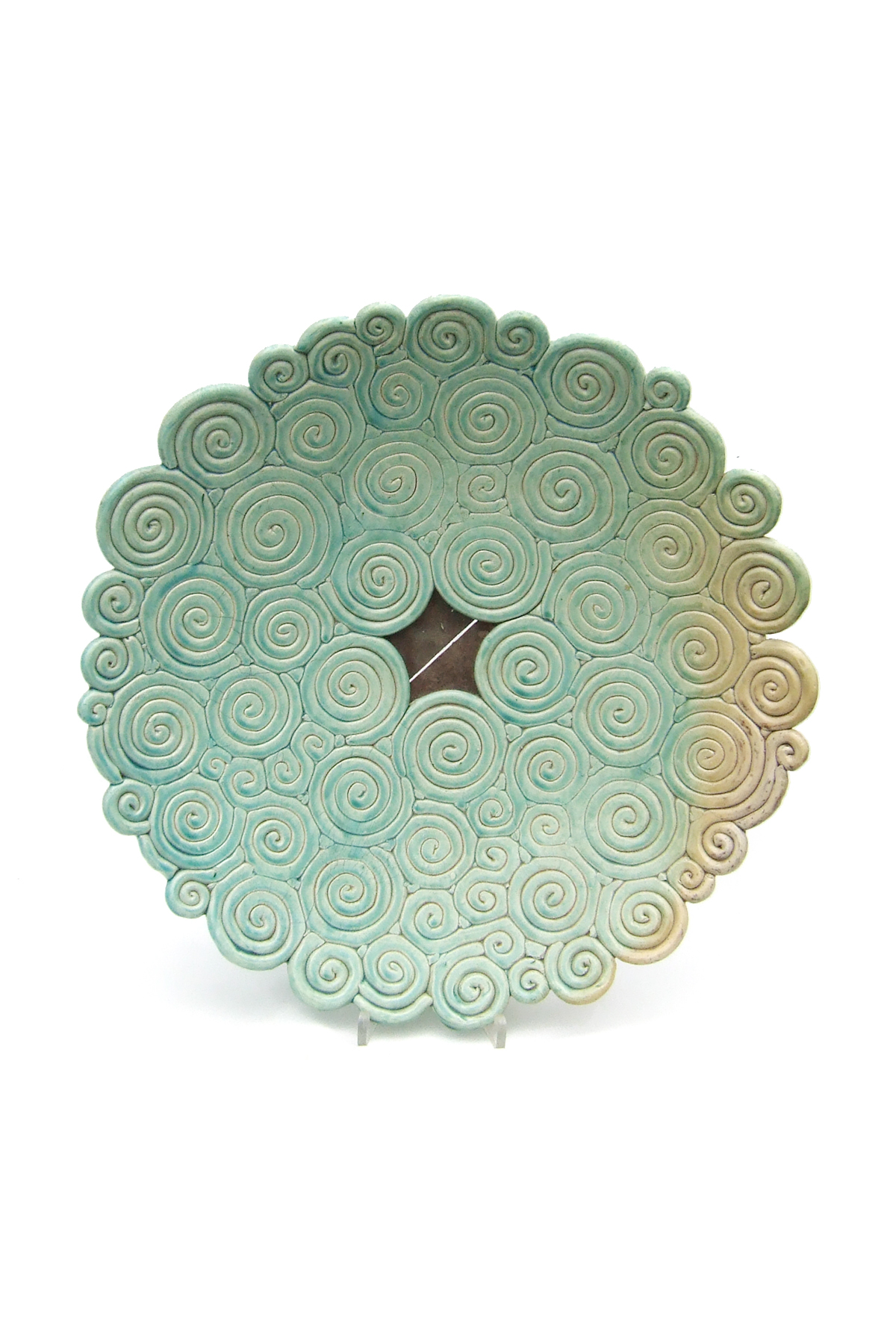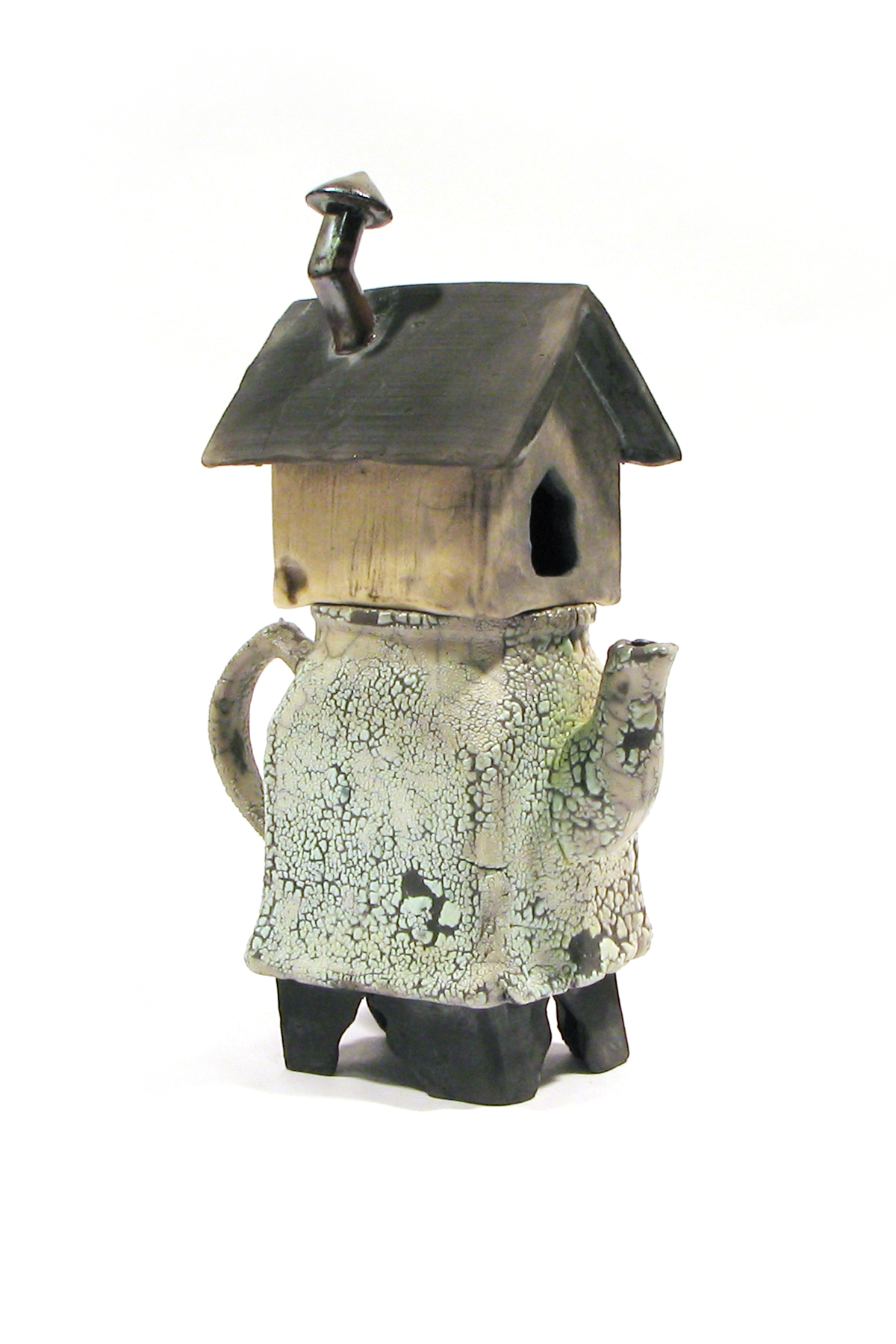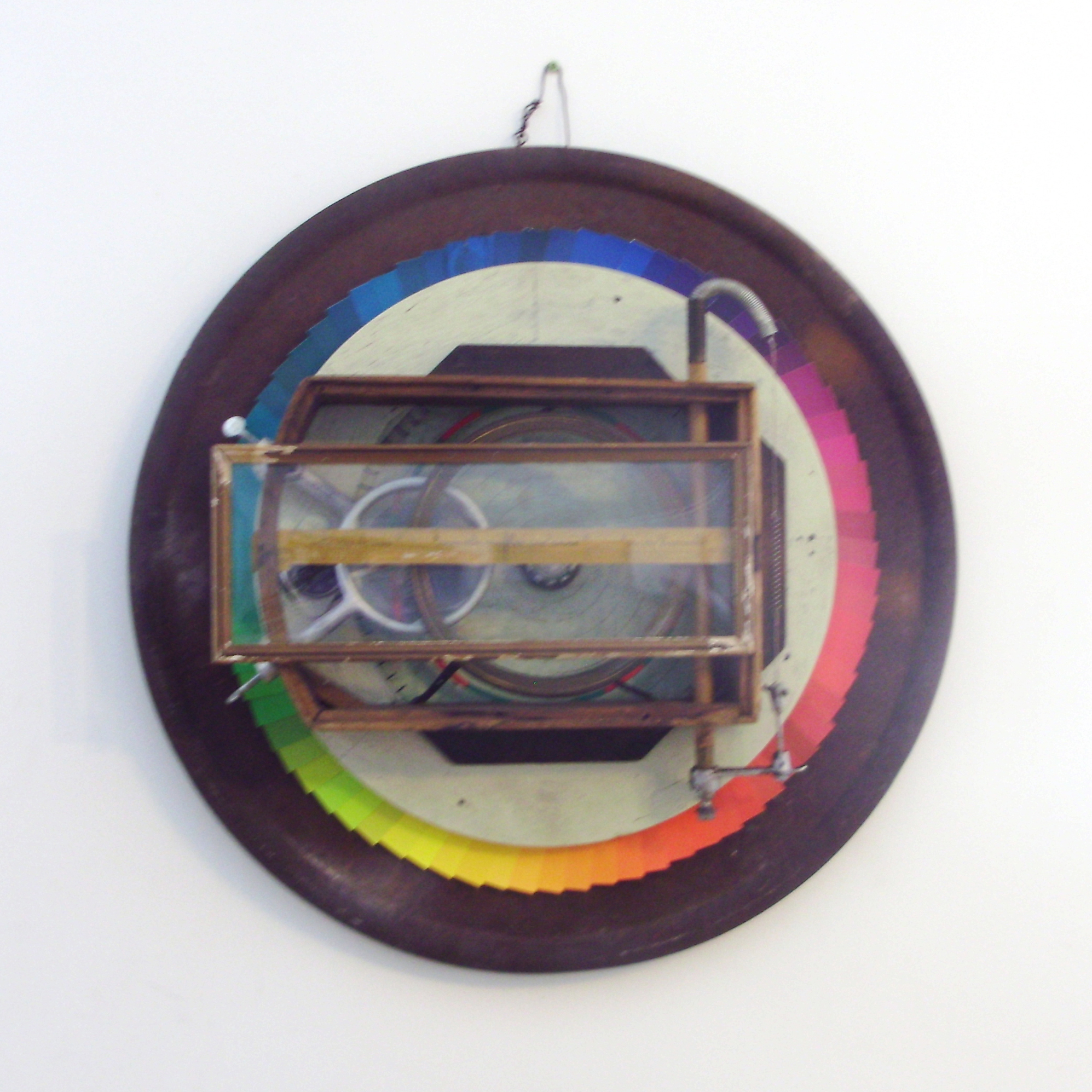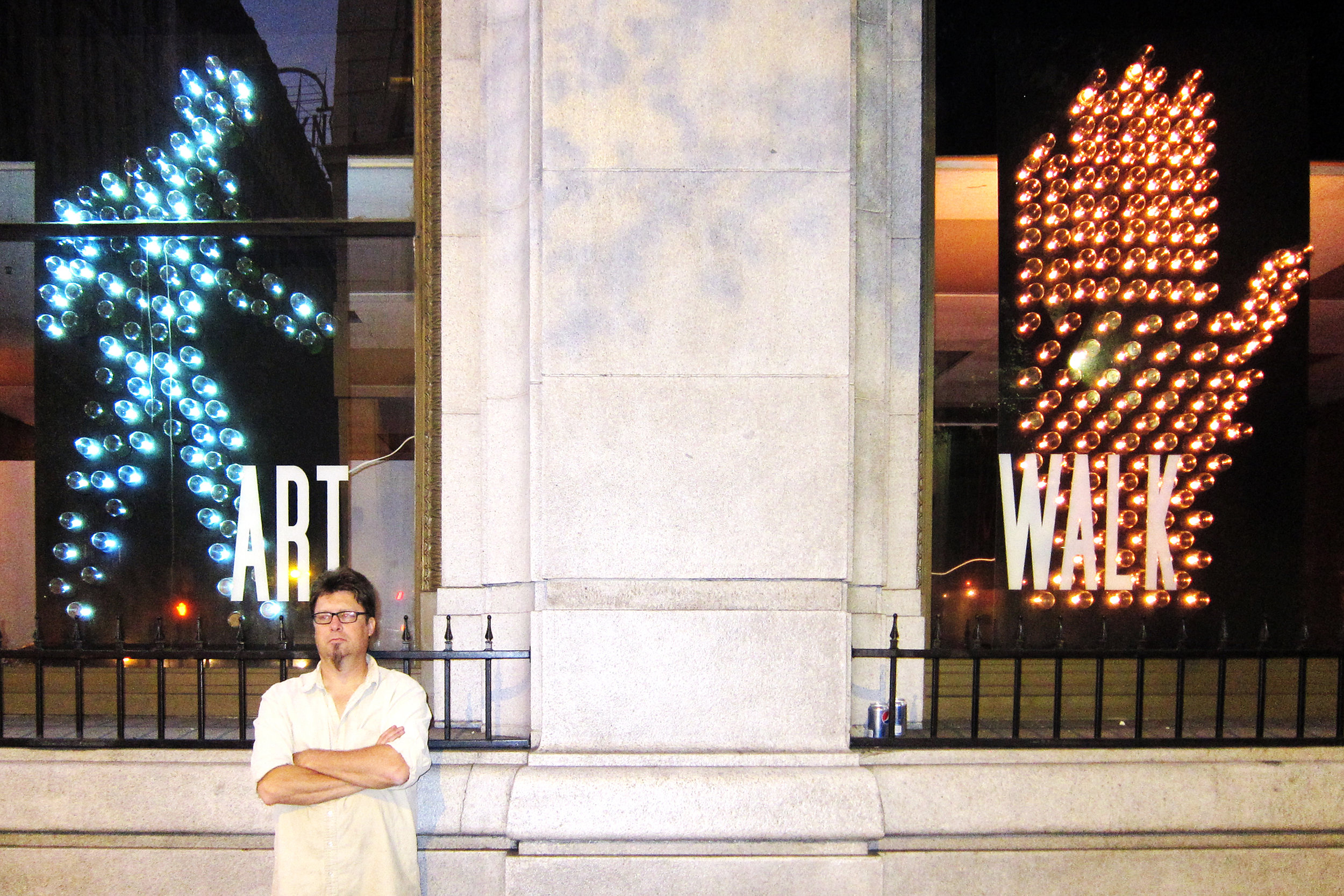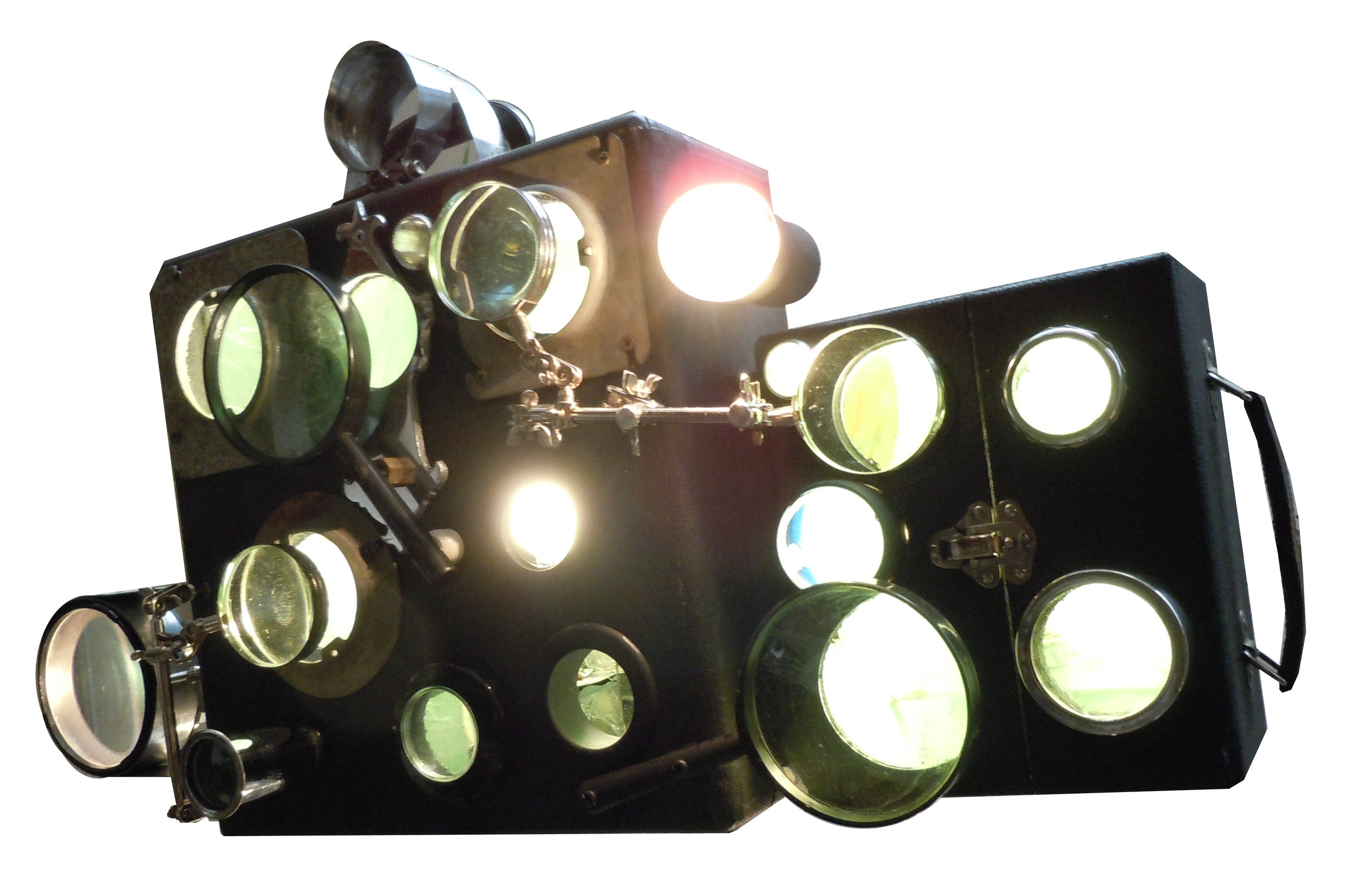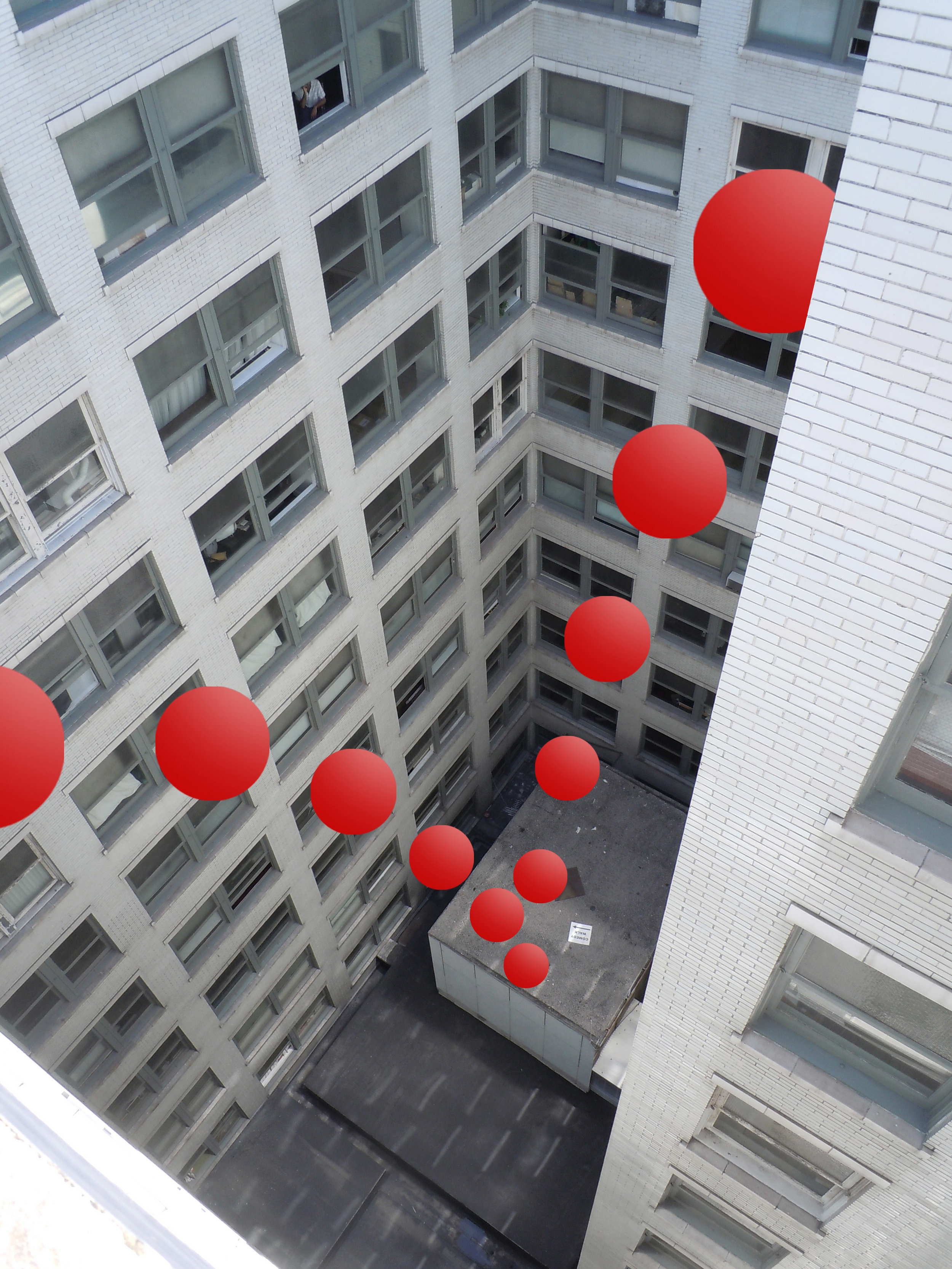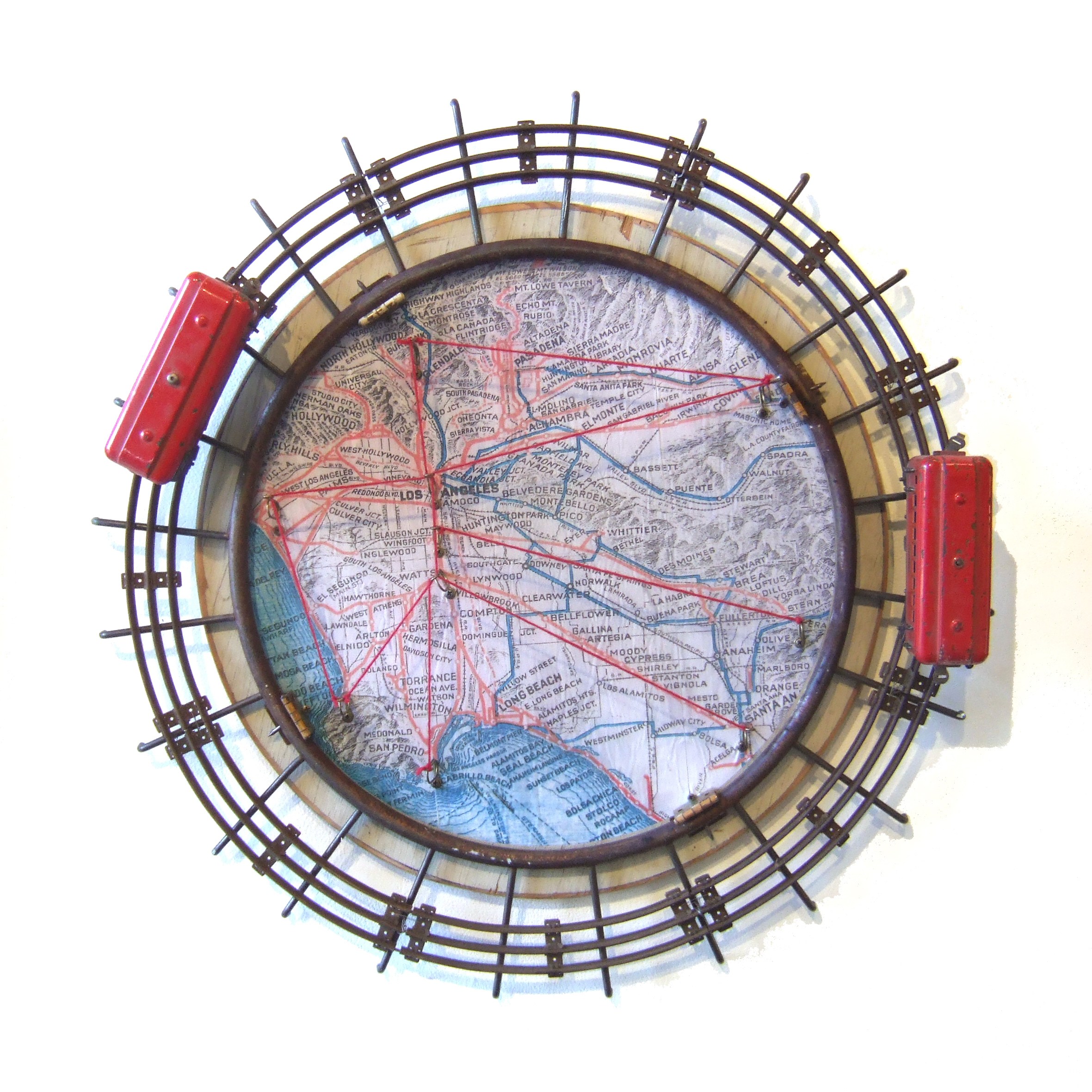Compendium of Knowledge
selected works by David Lovejoy
Asymmetric Magazine: Tell us about your collection of work.
David Lovejoy: I have amassed the World’s Largest Collection of original works by David Lovejoy. These exist in my home, my studio, my shop, and various galleries from time to time. This collection ebbs and flows as work is sold and I make new things out of my old things. That’s my last collection–old things. I have over 200 boxes and bins full of materials I’ve collected. Game pieces, wood trimmings, old hardware; all waiting to become part of something new.
I work primarily by repurposing existing materials. My assemblage usually takes the form of a shadowbox, as I use the depth to create layers or levels of items within. Most art hangs on walls, most walls are near where people walk, so I like to create compositions that change visually as one walks past.
AM: What's your biggest inspiration?
DL: My inspiration comes primarily from the materials I use. I have an appreciation for the craftsmanship of handmade things, a love for the patina of use that comes from a lifetime of being handled and used, repaired and repainted. There is the hint of a story in things that have been here a while, and I like to present those things in ways that catch a person’s eye and make them think and/or smile.
AM: Where can we find your art around the city?
DL: My office and showroom is on Gallery Row, above The Last Bookstore at 5th & Spring Streets in L.A.’s Historic Core–Lovejoy’s Contraption Emporium. I have several installations throughout the bookstore, and have built much of the odd shelving and sculptural bookwork there. I show occasionally in galleries across the city: The Hive, Cactus Gallery, MorYork, The Loft at Liz’s, FM Gallery. I also have a photo/graphic mural on the back of the Broadway Arts Building on Linden Place between 5th & 6th Streets, across from Pershing Square: “Back Street Broadway.” I designed the interior lobby in this building, and created the lobby chandelier. I also created the reception counter and conference room lighting in the Historic District’s Visitor Center on 5th Street, and have a small lens installation in their windows.
AM: What themes do you typically pursue in your work?
DL: I tend not to pursue themes in my work. I have an over-arching idea of a “Compendium of Knowledge”, a collection of things, thoughts, and ideas that we might have set down along our road to progress and I’ve picked them up again. These existed in scrolls and books, encyclopedic collections of information–how to make tools or draw in perspective, how to occupy yourself playing string games, how to measure in scale, or understand Morse Code. Different from the Internet, where everything can be found, these were thoughtful, edited compilations of “things we need to know”.
Most of the materials I use come from this city. They also grew up here and lived their lives here. They show the timeworn history we share.
AM: What role does Los Angeles play in your work?
DL: Los Angeles is my home. I was born in Hollywood, grew up in the valley, bought our first home in North Hollywood, and I’ve had a studio downtown for eight years. Being an Angeleno is by far the strongest influence on my work–the part of me that everything else comes from. The multiple frames on my shadowboxes grew from the architecture here, my Letherebe Lights came directly from the Zeiss projector in the Griffith Planetarium. My color pallet comes from the San Gabriel mountains, a pallet which runs “from rust to sepia”, as a friend once said.
Most of the materials I use come from this city. They also grew up here and lived their lives here. They show the timeworn history we share. I’m thrilled when I get a piece of L.A. history–an instrument that belonged to an early publisher at the Los Angeles Times, or blueprints from a 100-year-old bank building, or a projector from one of the old movie palaces. I feel like a steward of these cast-offs, like a bit of that history has been entrusted to me because I caught it as it was falling toward destruction. The whimsy and darkness and surrealism and nonsense in my work all come from Los Angeles.
AM: How do you think art impacts social change?
DL: I think art can impact social change, although that is not my intention as I make most of my work. I’ve found art can unify a belief, can put words or visuals to a thought or feeling that people can agree with–“Yes. That.” I’ve made work and found years later that it affected people profoundly, gave them distraction in a time of feeling overwhelmed, or made them feel represented and supported in a situation of unfair balance.
AM: What music is currently inspiring you?
DL: I love odd mash-ups of styles, like French klezmer dance music. While I work, I listen to old school jazz, Latin jazz, and standup comics.
While working, I am inspired by Latin Jazz. Tito Puente can fuel my tanks into the wee hours. Dave Brubeck is my go-to in the studio, but Pablo Sanchez or Buena Vista Social Club keeps me working fluidly.
AM: What can we expect to see from you next?
DL: My next project is a set of large assemblage panels for an office building in Canada. In general, you can expect to see more of the same, which at this point in my career means more of everything. I work with clay, wood, repurposed materials. The title on my business card says “Thingmaker”, because that’s what I do–I make things. Some of those things are art, some of them are just things. But you can expect to see more things from me. Public art things, shadowbox things, raku-fired ceramic things, woven-willow things, built-of-books things. It’ll be fun.
David Lovejoy is an LA-based assemblage and installation artist and designer. You can view more of his work at lovejoyart.com.


